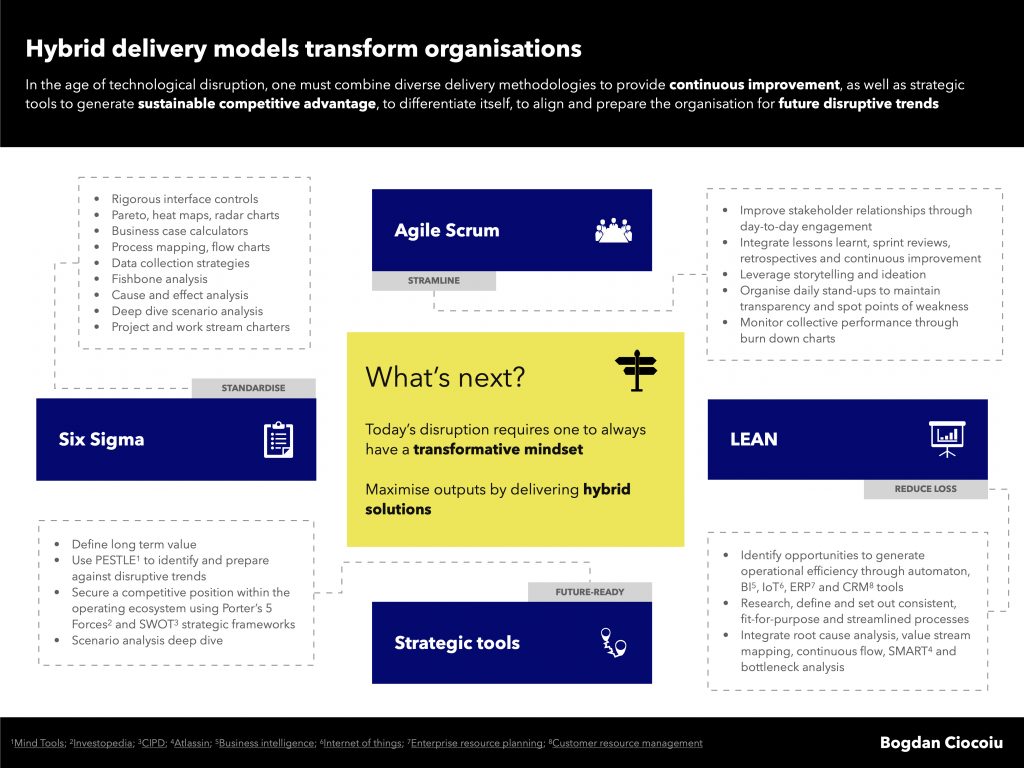Transitioning from a current state to a future state in an organisational or business transformation context could be a lengthy process. It might require diverse delivery methodologies and frameworks, including a dedicated project management office (“PMO”).
The professional services sector, including project and programme management communities, support several distinct delivery frameworks, including Waterfall, Agile (Scrum), Six Sigma, Lean and smaller strategic tools.

Example of delivery methodologies
We recommend the delivery methodologies, instruments and frameworks illustrated above for the following benefits:
Six Sigma delivery tools
- Creates and manages rigorous interface controls
- Leverages Pareto, heat maps and radar charts
- Encourages the use of business case calculators, process mapping, flow charts and project or workstream charters
- Creates data collection strategies
- Leverages fishbone analysis as well as cause and effect and deep dive scenario analysis
Agile delivery methodologies
- Seeks to improve stakeholder relationships through day-to-day engagement
- Integrates tools such as lessons learnt, sprint reviews, retrospective and continuous improvement
- Leverages storytelling and ideation and sets objectives and goals (also defined stories and epics)
- It relies on daily stand-ups to maintain transparency and spot areas of weakness
- It introduces burndown charts to monitor individual and collective performance
LEAN delivery instruments
- It focuses on identifying opportunities to generate operational efficiency through automation, business intelligence, the use of enterprise resource planning (“ERP”) and customer relationship management (“CRM”) tools, as well as the emerging internet of things.
- The framework is centred around researching, defining and setting out a consistent fit-for-purpose streamlined process to sustain day-to-day operations.
- It integrates root cause, value stream mapping, continuous flow and bottleneck analysis methods and encourages using SMART objective setting.
Other strategic tools
- Specialises in setting out the long-term value for the organisation
- It leverages PESTLE, and it prepares the organisation for future inflight disruptive trends
- It leverages Porter’s five forces and SWOT strategic frameworks
- It introduces scenario analysis deep-dives
These frameworks are somewhat distinct. Delivering a project or a programme requires selecting the specific instruments suitable for that project or programme only and leveraging those during the delivery phase’s lifecycle.
